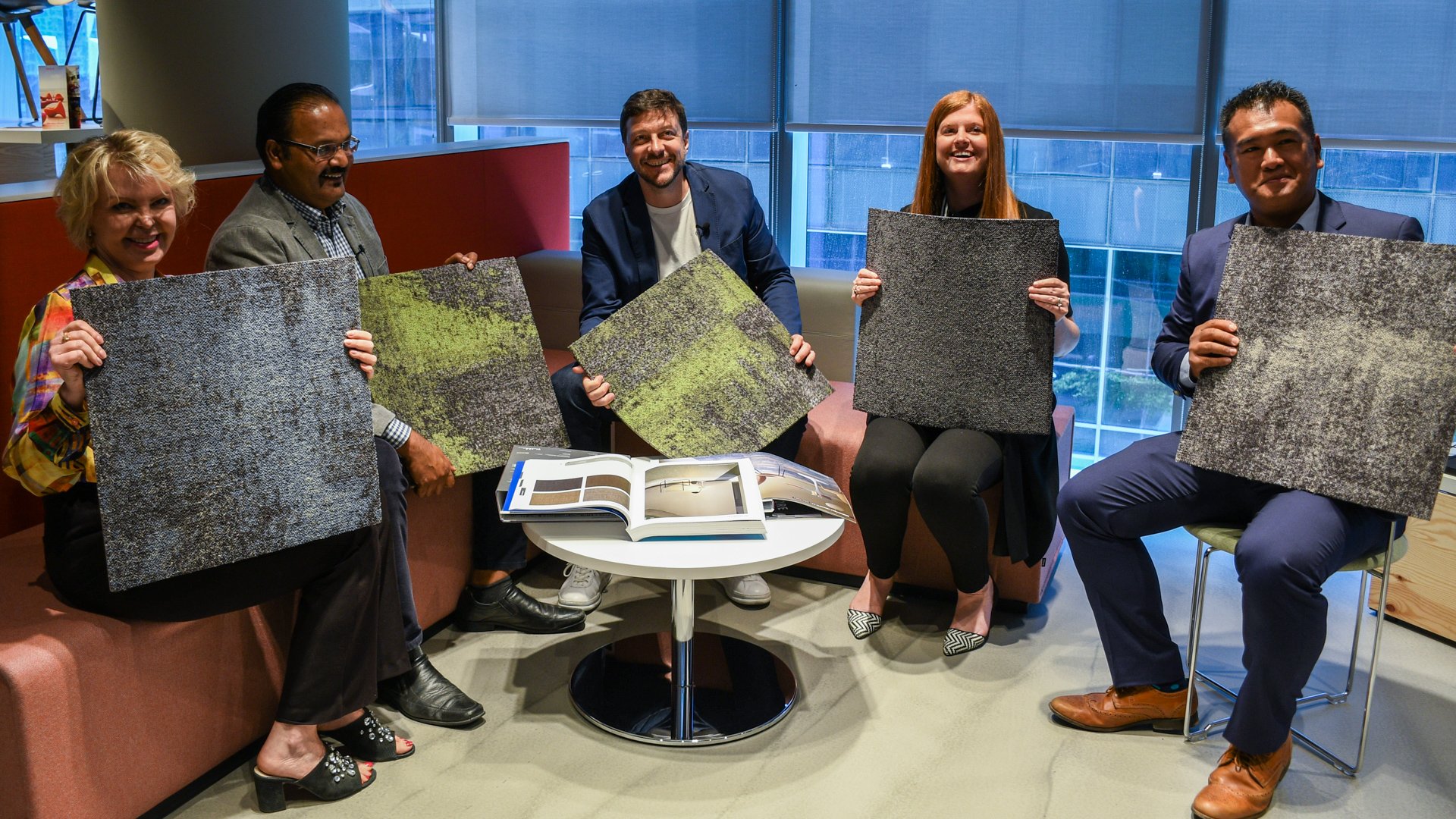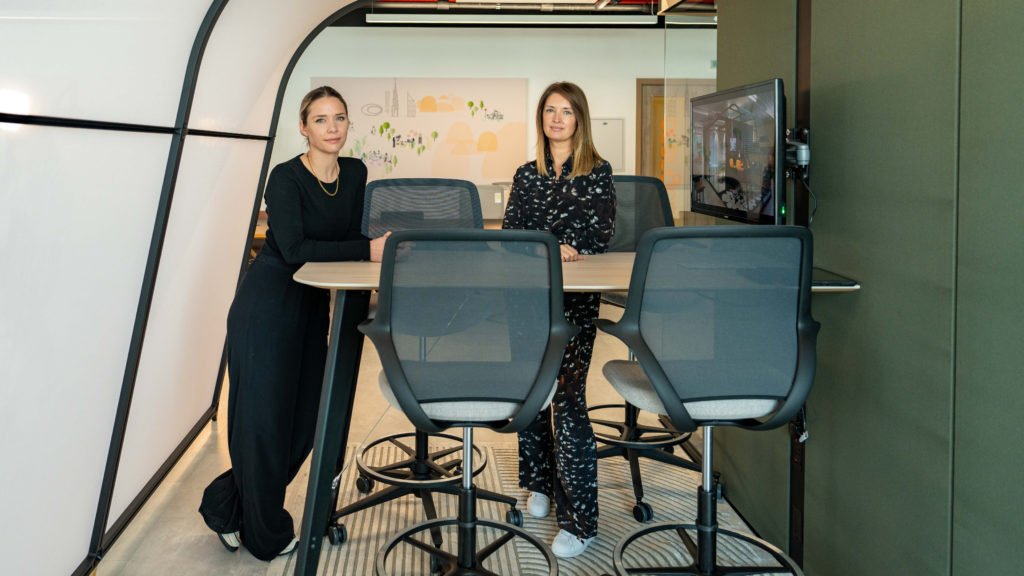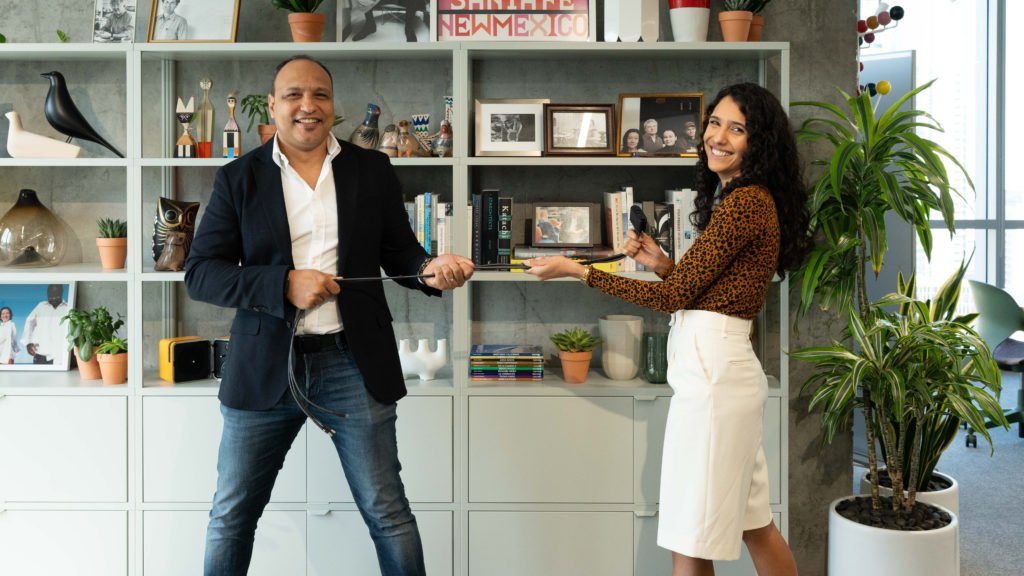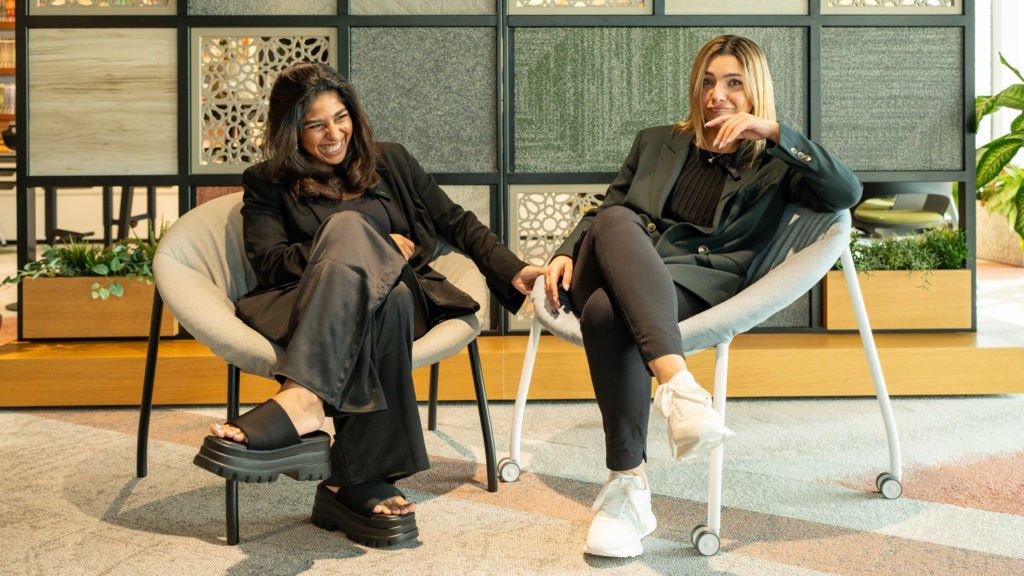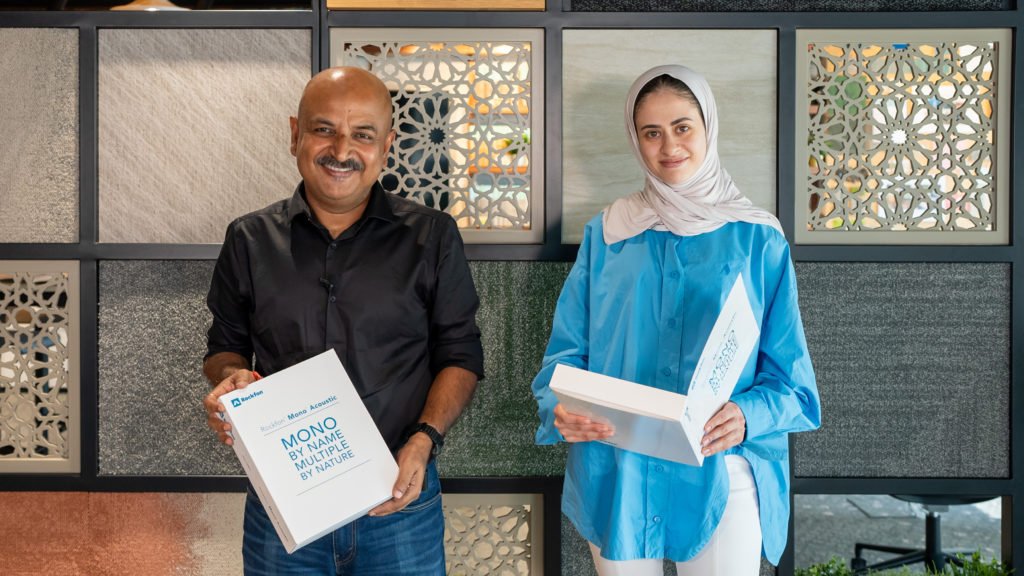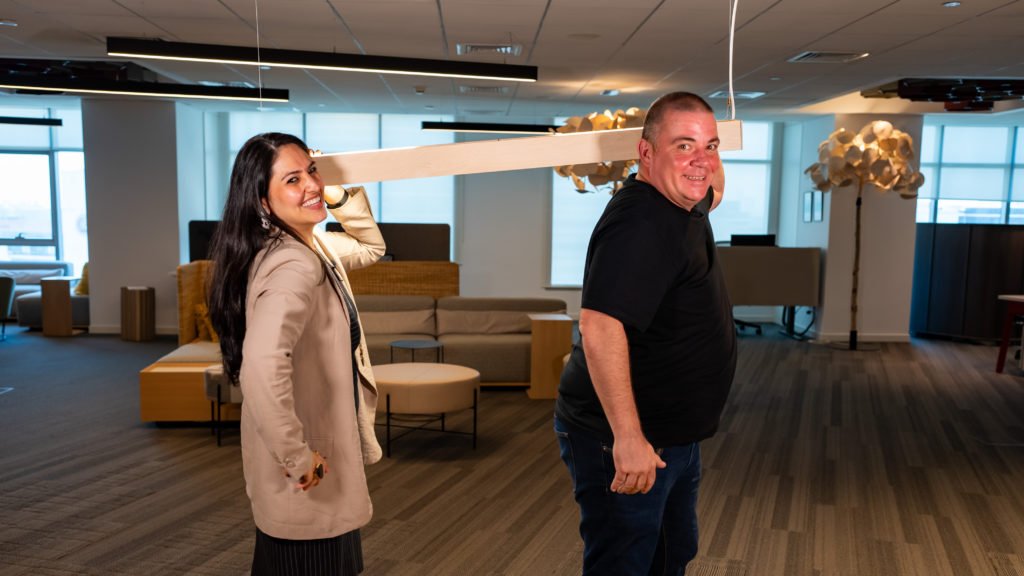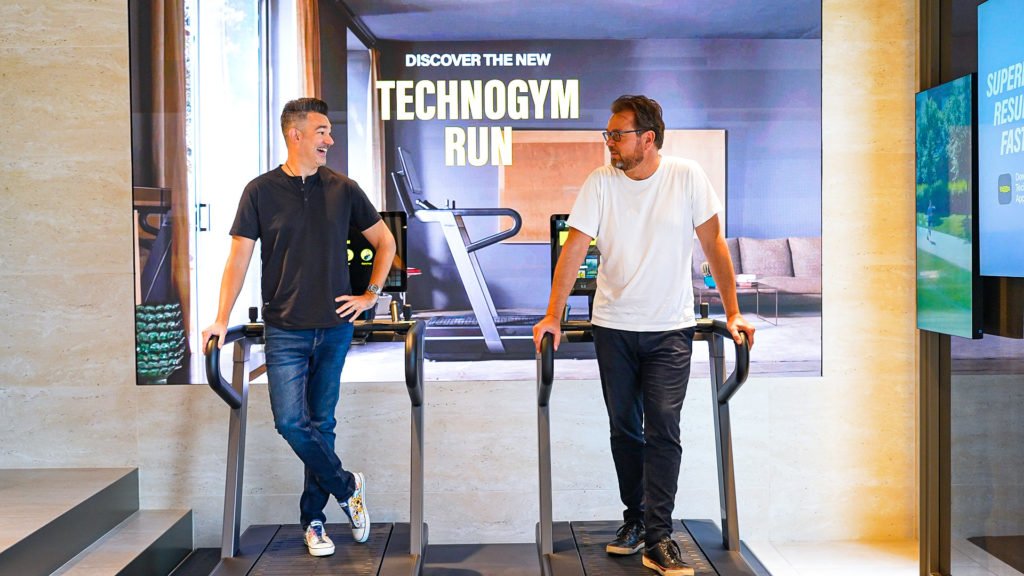With all the talk of bringing the outdoors in, it is refreshing to see a leading manufacturer take on a different approach – one that involves embracing the urban environment we’ve grown accustomed to.
Milliken’s latest carpet tile collection, Comfortable Concrete 2.0, is a nod to the ubiquitous building material without which, our so called urban jungles would not be possible. Designed by Milliken’s own Helen Lloyd, the collection reflects her desire to reference the extreme elements in our environment – from sunsets and stormy skies, to forests and deserts, and the many beautiful, visual and physical forms of nature. The latest collection also builds on the existing Comfortable Concrete range of performance loop carpet tiles that have seen global success across multiple projects.
For this review, we invited Rachel Kidd from LW Design and Juan Hildebrand from Schwitzke Middle East to the a2z showroom in d3, for a coffee and a presentation by Milliken’s Regional Manager, Dominic Formilleza, to help us gain deeper insight into this innovative product.
The Review Crew
Above from Left: Juan Hildebrand, Managing Director at Schwitzke Middle East, Rachel Kidd, Interior Designer at LW Design and Dominic Formilleza, Regional Manager at Milliken
Comfortable Concrete 2.0
When we first heard the name Comfortable Concrete, we had a hard time placing the two words together. One is a soft and warm environment, while the second gives off cold vibes of plain grey concrete. But leading carpet manufacturer Milliken sees it differently. With the new and improved collection featuring three new designs – Laid Bare, Urban Drama and Urban Poetry – Milliken combines superior production technology and biophilic design principles to create a range of carpet tiles that add a refreshing urban look to interior spaces.
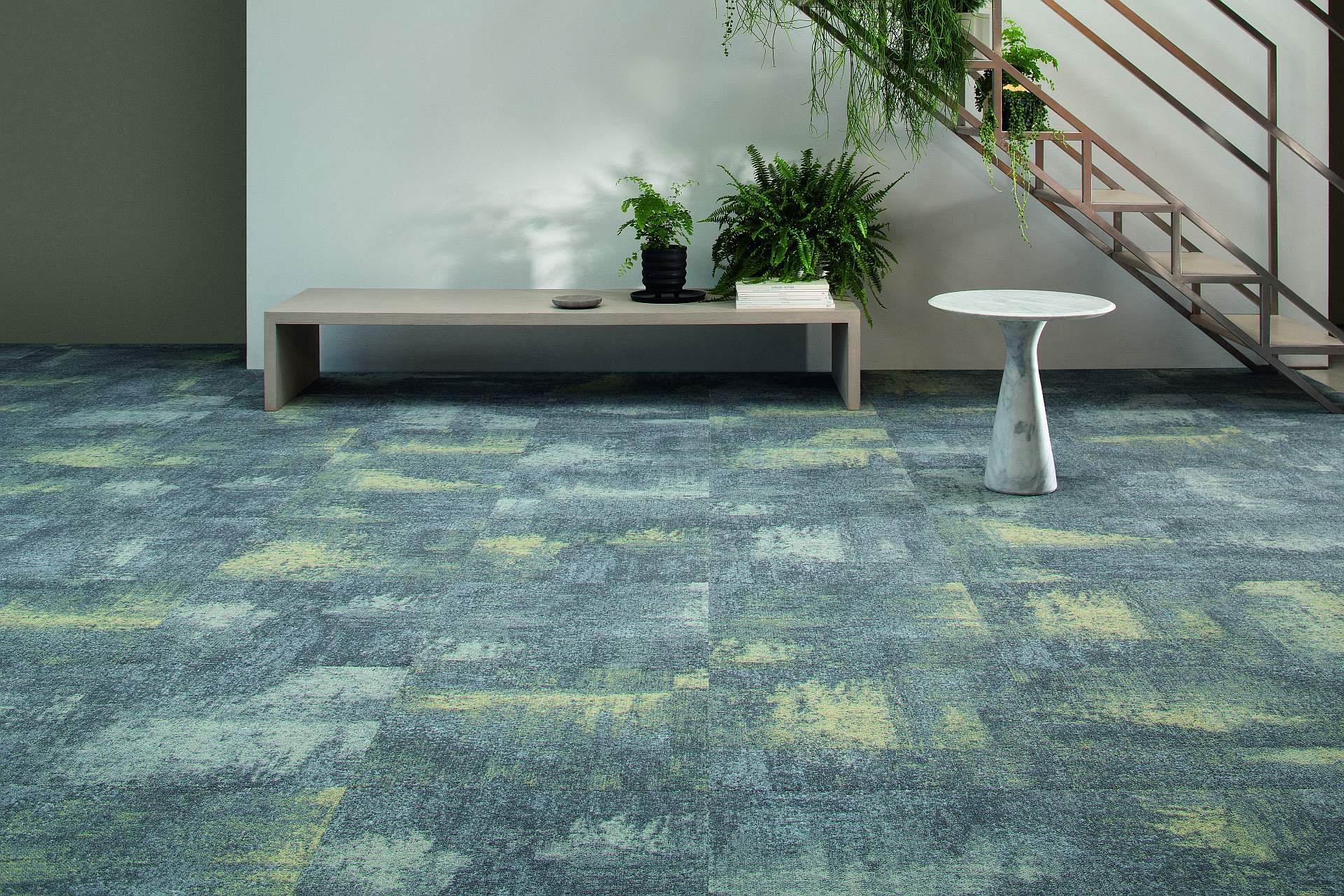
As Dominic shows us the range, he proudly explains the force behind these unique designs – the Militron® printing technology. Milliken’s own brand of patented digital dye infusion (DDI) technologies are used to create dramatic, almost cinematic patterns on carpet tiles to deliver that strong visual texture. With the latest collection, each of the three designs comes with 16 unique patterns that collectively create yet another pattern. We did question the possibility of randomly receiving multiple tiles of a single design in one shipment, but Milliken has a quality control process in place to avoid this. A unique reference number is used to track the production process, which can detect if two of the same patterns are accidentally packed in a box.
Customisation Options
What’s even more impressive is the flexibility given to designers to create their own colour combinations. For custom designs, a code for a specific colour composition is provided, and designers specify the composition in terms of a ratio of colours that are mixed and matched, using Militron tech.
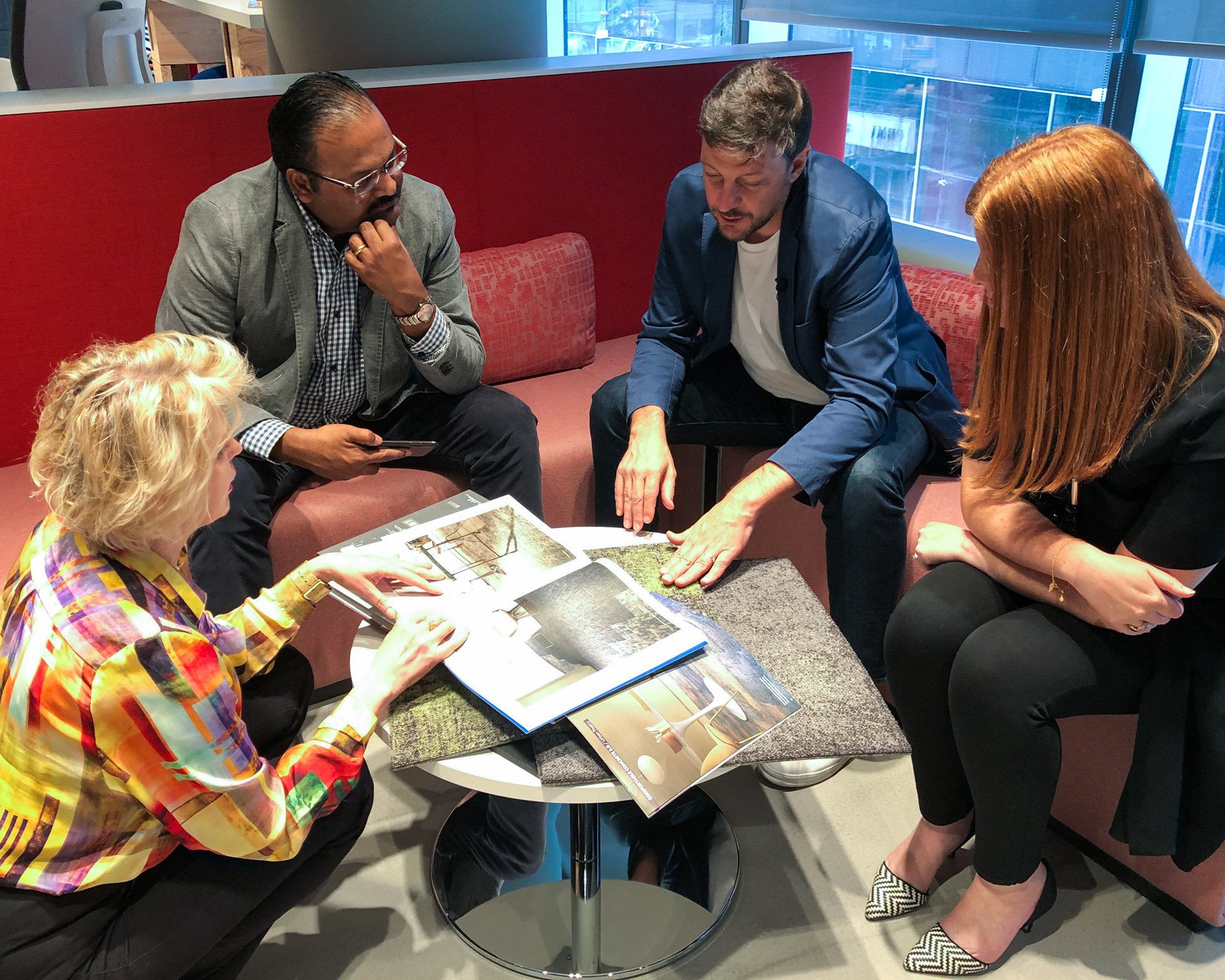
Acoustic Angle
It would be a shame to talk about the features of the collection without describing its high acoustic quality. Milliken’s latest carpet tiles absorb 50 percent more sound than the alternatives in the market. Combined with a lifetime warranty for colourfast-ness and ease of replacement, it’s no wonder Milliken’s carpet tiles are the first choice for popular, high traffic areas. The team proudly tells us of Dubai Airport Terminal 1 as an example, where their carpets were installed 20 years ago and are standing strong till date! Given the amount of foot traffic, you’d think there’d be some visible damage. It only serves as a testament to the brand’s quality. Throw in its stain resistant features and you’ve got a carpet that’ll last you a lifetime.
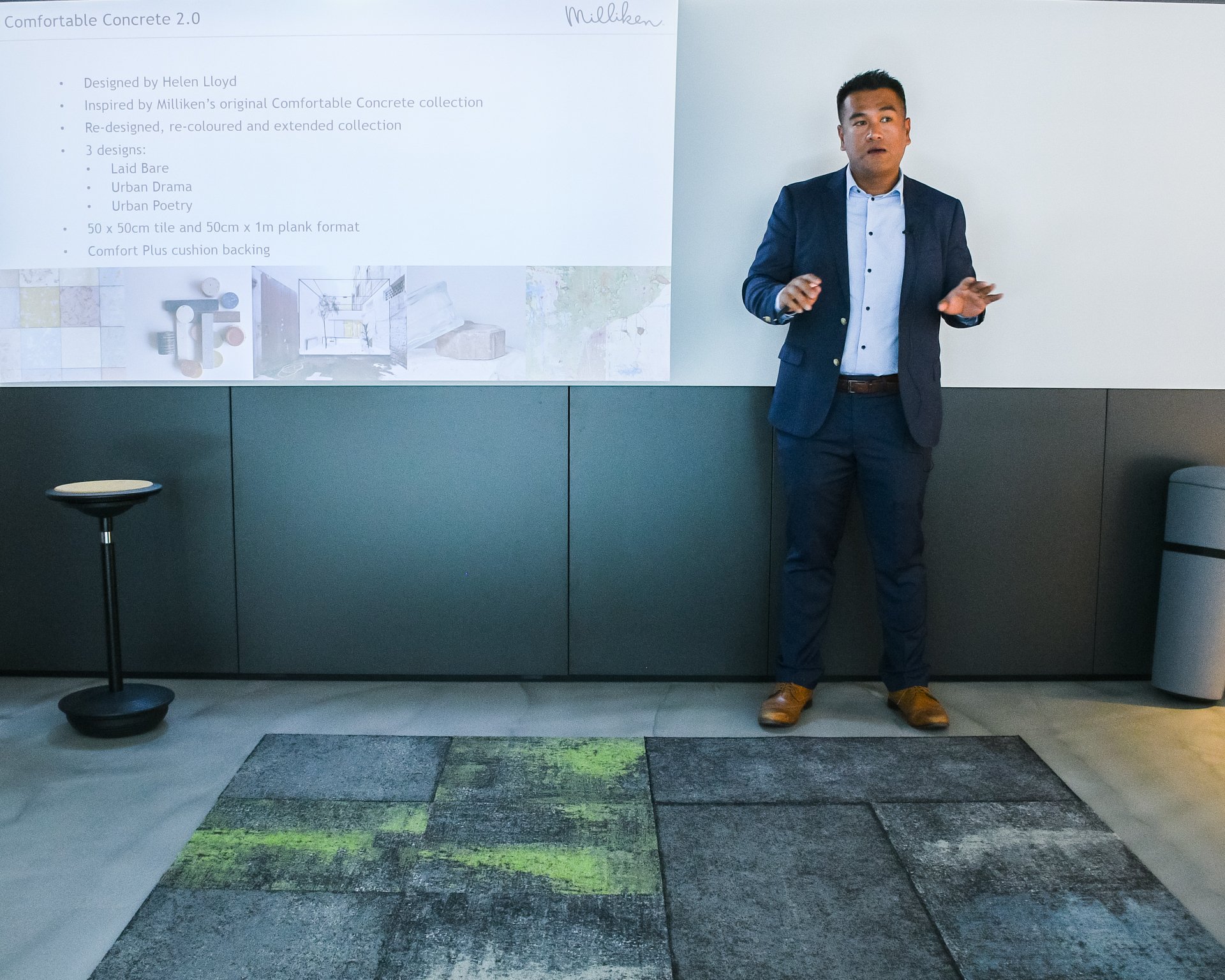
Rachel: I love this urban take on “bringing the outdoors in”. It’s an interesting departure from natural patterns and elements. The soft-backing is impressive and it’s actually really comfortable to walk on, not something I expected from carpet tiles! And the longevity is certainly noteworthy.
The fact that it’s a modular product despite the random patterns, is something I really like. Being able to just take out and replace a tile without disrupting the design flow is incredibly useful! I initially pictured it being used in meeting rooms only, but after seeing the entire range, I can see it going well in guest rooms and corridors of hotels too.
Juan: I like the industrial feeling and the distressed look. The carpets aid in improving the acoustics, but what I really like is how soft it is. Additionally, the design is such that stains, if present, cab be well hidden, which makes it as functional as it is aesthetically pleasing.
The patterns allow for greater flexibility which makes a designer’s life so much easier. The printing tech is impressive, you rarely get that level of detail on carpets. Even more impressive is how they’ve made something like concrete so visually appealing. Definitely makes you reconsider urban design themes.
Comfortably Green
The carpet industry, believe it or not, is quite far ahead in the sustainability race. Milliken Carpets come equipped with a choice of TractionBack®, an impressive, bio-based, high-friction coating that keeps their PVC-free tiles securely in place. This anti-skid material is applied at the manufacturing stage and does a pretty good job of holding the tiles in place. Trust us, we tried. The TractionBack® coating is made of a material that does not contain any glue. Pretty useful, considering the amount of adhesive needed for the large surface area covered by carpet tiles. And because there’s no glue, there are no VOC emissions, which is great not just for the environment, but for achieving that coveted LEED certification too. Not only does it reduce the cost of labour that is required to apply the adhesive, but it also serves to benefit the environment.
The 100 percent, PVC free range can be turned into scrap and remade into new carpet tiles. Admittedly, Polyurethane is used, which isn’t toxin free, but is definitely less toxic. Moreover, the backing is 90 percent recycled. Also adding to the sustainability quotient is the acoustic control, thanks to the backing, and the moisture control that prevents mould from growing, thus improving indoor air quality. PVC doesn’t breath, but Milliken’s carpets do because they are 100 percent nylon, which again contributes to better quality of air.
Rachel: The TractionBack® is more useful than it seems. You’re not just saving on costs, but on time spent on labour, as well as the waste and other environmental costs associated with it. When you consider the entirety of benefits, from form to function, it really expands the possibilities of how and where you can place the carpet.
Juan: I love how seamless yet random the product is, you’re not forced to work in a grid. The mimicry of steel and concrete into biophilic patterns allows for a realistic urban environment that doesn’t give off cold vibes. In the context of biophilic design, the contrast you get is just enough, and not too much, like in some cases with moss. And the health aspects that come with improved air quality is definitely a plus. I’d love to place the carpet in bookstores or libraries, I think it would look great.
Final Thoughts
We’re definitely loving that urban look going on with Comfortable Concrete. The Militron® printing technology needs to be seen to be believed. In a way, the patterns are stunning and truly biophilic.
While the price may be ever so slightly on the higher end, it’s still at a competitive level compared to the alternatives in the market. And given the success of the previous iteration of the product, we expect similar if not greater popularity for Milliken’s latest collection.
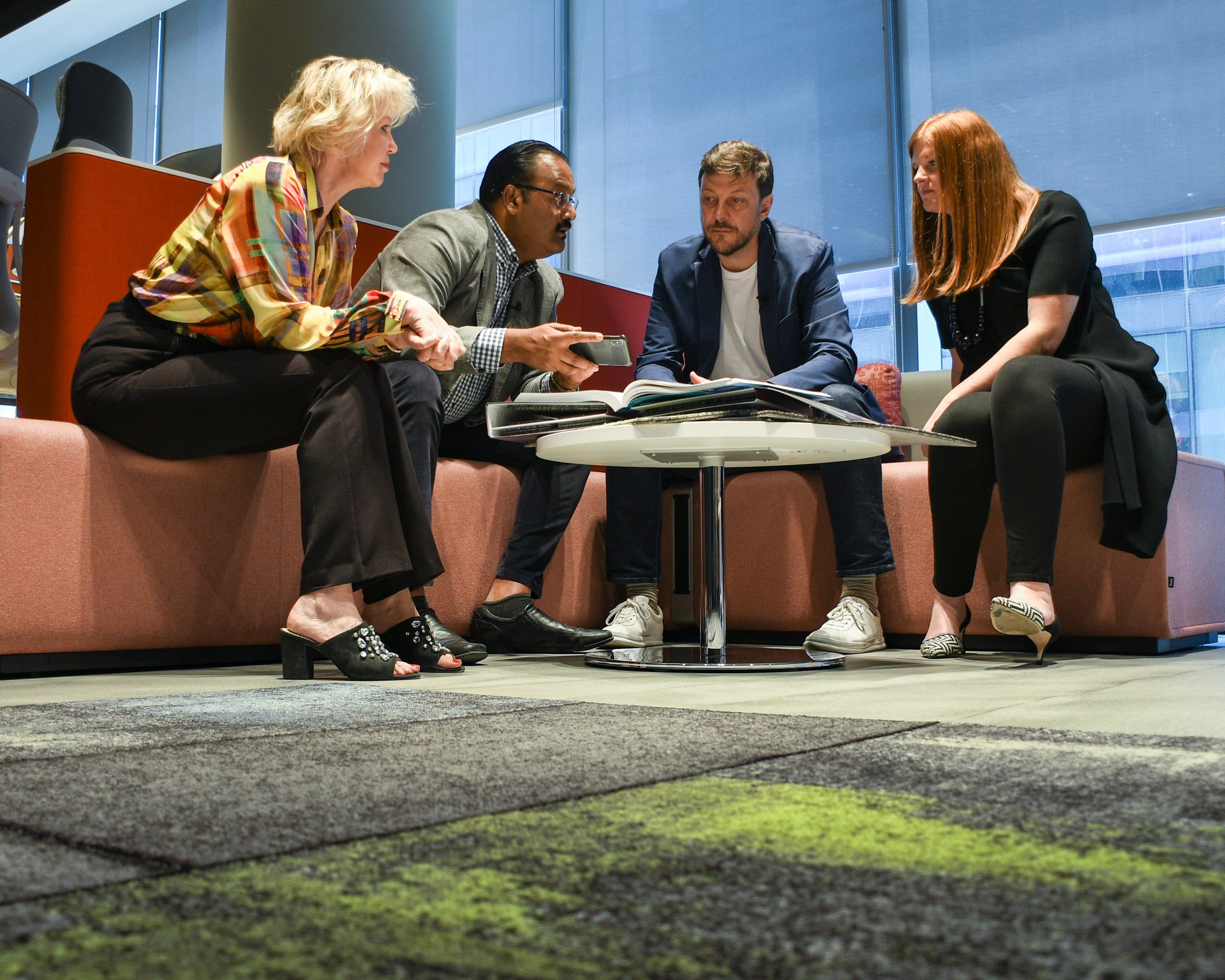
Rachel: There are certain areas in hospitality projects where carpets are not used, but I believe the design of these is flexible enough to work on these areas. The price point also supports this well. What I love is how it’s in line with the current trends, combining urban themes and biophilic design. I’m personally towards the natural colours rather than the pastels, given they’re more in line with the ethos of the product.
Juan: I think the cost component, keeping in mind the design, works very well. In areas like airports or even retail, you need products like these, which can last long, making it a worthwhile investment. The ambience it provides allows for some interesting use cases, ranging from office spaces to education.

